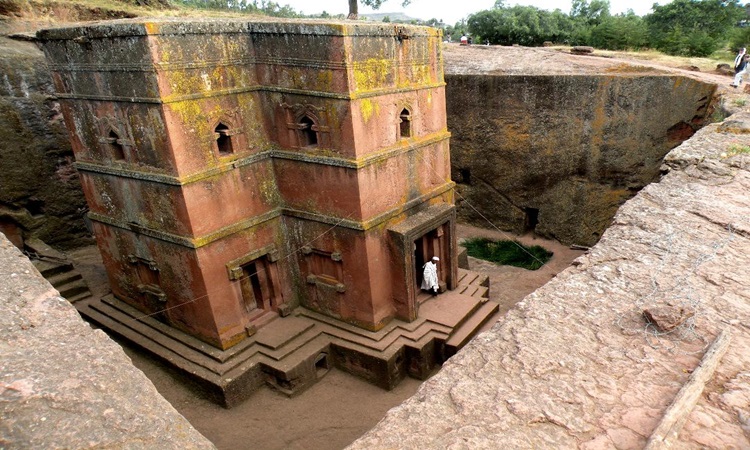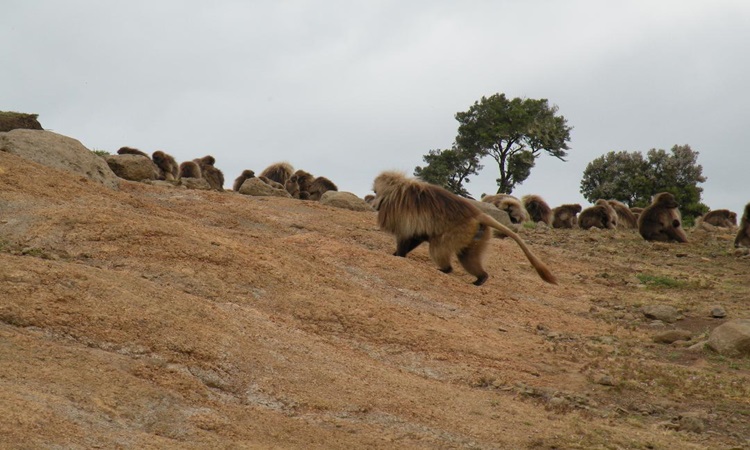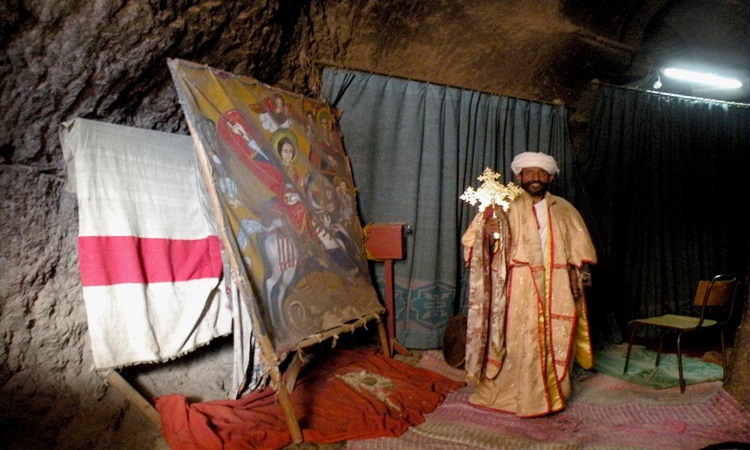Can you guess the place where you can explore countless flea markets, taste unusual cuisine, stay in five-star hotels with one-star service, and still have an incredible time? Welcome to Ethiopia!
Before we dive into our adventures, here are some intriguing facts about this remarkable country:
- Coffee: Ethiopia is the birthplace of coffee, with beans originally hailing from the Kaffa region.
- Time: Ethiopians measure time in twelve-hour cycles, so what we know as noon is six o’clock to them. Be mindful when asking for the time!
- Calendar: Ethiopia uses a unique calendar with thirteen months, different from both the Gregorian and Julian calendars. Their New Year falls on September 11th.
- Names: Children are given a first name of choice, but the last name is always the father’s first name. In Ethiopia, people are addressed by their first name, so it’s always “Hello, Mr. Solomon!”
- Languages: Ethiopia boasts around seventy languages, with Amharic as the official one. Amharic features over two hundred characters, rivaling even the complexity of Chinese!
Exploring Addis Ababa: A City of Contrasts
Arriving in Addis Ababa early in the morning we found a beehive of activity, people in the hundreds running in empty streets and exercising in a barren park. Like a city of Olympic hopefuls, it was a pleasant surprise. Checking into the Hilton Hotel was a stark contrast—luxury amidst surrounding poverty.
Addis Ababa, the third-highest capital city in the world, is vast and flat. The local museum featured intriguing exhibits, including the 3.5-million-year-old Lucy skeleton and royal artifacts, though the displays felt somewhat disjointed.
Ethiopian culture is a blend of oral history and documented facts, with traditional stories full of miracles and biblical connections. Ethiopians believe they descend from King Solomon and the Queen of Sheba, with symbols like the Lion of Judah and the Star of David reflecting this heritage.

Lalibela, Rock hewn church. Photo courtesy of Shlomo Chriqui.
Axum: Guardians of the Ark
The next day, we flew to Axum, Ethiopia’s northernmost city, known for housing the Ark of the Covenant. This sacred object, allegedly brought from Israel by Menelik, son of the Queen of Sheba, is kept in a simple building, guarded by a priest appointed for life.
At the Maryam Tsion Church, we encountered a heartbreaking scene of severely ill and disabled people begging for money. Overwhelmed by their desperation, we borrowed money from our guide and driver and handed out one Birr bills. I was deeply moved by a blind man whose hand I had touched while giving him a bill. Feeling inadequate, we made a point to carry money for those in need from then on.
Don’t miss the burial grounds of the Axumite kingdom, where ancient kings erected towering steles over their graves. As we walked through the town, we saw widespread poverty. Many people supplement their income by selling homemade fermented drinks, a practice I had also seen in South America. Outside their homes, they would post a pole with a red sock at the top, signaling that customers were welcome. We visited one of these homes, where the wife, who managed the operation, greeted us. She sat with a few half-sober patrons drinking a thick yellow liquid. Two large blue plastic barrels filled with the brew stood against the wall. Though we were offered a taste, we politely declined, knowing it could have sent us straight to the emergency room.

Simien Mountains, a view at dawn. Photo Courtesy Sholmo Chriqui.
Lalibela: A World Carved in Stone
The next morning, we flew to Lalibela and checked into the Jerusalem Hotel. That afternoon, we visited the highlight of our trip: nine rock-hewn churches carved into a massive rock. These enormous structures, created by hand eight hundred years ago, are a marvel, comparable to the Pyramids. Each church is still in use, with one featuring a pure gold cross that was stolen and later recovered.
We attended a service at one of the rock-hewn churches. We climbed a narrow path with a stream of worshippers, entered the packed church, and, with some boldness, took pictures from a bench. Religion is a way of life here—you pray, eat, and work the land. Everyone—men, women, and children—participates in these traditions. Life is hard; people must support their families with what they produce from their land. There is no social security, and no one takes care of the disabled and the poor. Charity and religious institutions often fill these gaps, providing a mentally sustainable framework for the community.
Lalibela showed us that Ethiopia had a great past, requiring ingenuity and vision. If this place were in the West, it would undoubtedly attract millions of tourists.
A Flea Market Adventure at Yemrehanna Kristos Church
The next day, we drove three hours through the mountains to visit the Yemrehanna Kristos church, built inside a large cave. Upon arrival, we encountered a village where invalids and sick people were asking for donations, a scene we had become accustomed to. We distributed Birrs to those in need along the way, including blind children and women suffering from goiter.
The church, built nine hundred years ago within the cave, was interesting but not worth the long drive for another visit. Unfortunately, it was here that we unknowingly picked up fleas. By the time we returned to the hotel, Avi had noticed flea bites, which were more apparent the next morning. It took us a week in Addis Ababa to get rid of them, and we each had at least a hundred bites—except Shlomo, who seemed immune.
Traditional Dance and a Night of Laughter
That evening, we went to a bar featuring traditional Ethiopian dancing. The performance included a female dancer, a string instrument player, and a drummer. Audience members were invited to dance with the performer, trying to mimic her moves. The singer improvised lyrics, often about audience members, creating an interactive and lively atmosphere. Although we didn’t understand the lyrics, the experience was entertaining and good-natured.
In Bahir Dar, we visited a local venue where we were the only foreigners. The Ethiopian audience had quite a few laughs at our expense, and we were all dragged into dancing. It was clear our Middle Eastern genes were up to the task; we managed to show them we could move too. After about half an hour of fun, we left with smiles on our faces.

“Separating the wheat from the chaff,” Photo Courtesy Shlomo Chriqui
Simien Mountains: Trekking in the Wilderness
The next day, we flew to Gonder and checked into Hotel Goha, which was in poor condition and infested with fleas and bed bugs. We packed our gear and prepared for our trip to the Simien Mountains. We bounced around in a dusty, noisy van on an unpaved road, feeling like we were in a giant saltshaker. We picked up our guide, Moltan, and an armed scout who would be our personal guard for the next four days.
Arriving at Simien Mountains National Park, we started our hike from Debark. With walking sticks and daypacks, we enjoyed a two-hour warm-up walk on relatively flat terrain before reaching the Simien Mountains Lodge at ten thousand feet, where we hoped to leave the fleas behind.
The following day, we were dropped off at Sankaber Camp and began our seven-hour trek to Gich Camp, ascending to twelve thousand feet. We took in stunning views of the Simien Mountains, saw aloe vera plants and Gelada baboons, and stopped at a waterfall.
During a steep climb, we encountered a group of fifty children and one adult selling handmade items. Each child’s eyes were filled with hope as they presented their goods. We bought a hat and a basket but felt compelled to give each child one Birr, sensing their disappointment. This act of giving felt more for us than for them, highlighting the challenges of accepting such scenes in today’s world.
We continued our trek, constantly climbing and descending with no flat surfaces. As we neared camp, amidst a mix of languages, we heard Hebrew. Israelis are truly everywhere! Many of them were much younger, closer to our children’s age. It was gratifying to share our passion with a younger crowd and receive respect for something their parents might never attempt. Being the oldest in the group made us the center of attention, and we dispensed a lot of advice.
At night, it grew very cold, and we took refuge in a small stone structure that was overcrowded. We had a simple dinner of soup and bread, as the rest of the food was unappetizing. We were anxious about the possibility of getting sick from the food.

Gelada Monkeys in the Simien mountains, Photo Courtesy Shlomo Chriqui
Shlomo began experiencing stomach problems, accompanied by fever and severe diarrhea. Avi and I grew concerned and started taking preventive antibiotics, hoping for the best. The next morning, Shlomo felt quite weak, and we all agreed that it would be unwise for him to continue with the trek, especially since this was going to be our most challenging hiking day yet.
After a modest breakfast of three small, boiled eggs (don’t worry, the chickens seem to have trouble finding enough to eat), fresh tomatoes, bread, locally produced honey, and tea, we set out to climb Mount Imet Gogo (13,000 feet). The climb lasted two hours, and I kept worrying that we might reach the summit only to find it fogged over, unable to see anything. The top always seems so elusive; you think you’ll be there in a few minutes, but it’s always just out of reach.
Reaching the top, we were greeted by breathtaking views of endless mountains and valleys in shades of green and yellow. Standing on a cliff with a 2,000-foot drop, we enjoyed a sunny day, snacking on nuts and a power bar before starting our descent into the valley. Ironically, we would soon be climbing up the other side.
At the bottom, we began our challenging ascent up the next ridge, breathing heavily at 13,000 feet. The sun was strong, and we took it easy, knowing we’d soon reach the ridge. Finally, we made it to the top and found a pleasant spot with another stunning view. After three more hours, we reached Chenneck Camp. It was now late afternoon, and we had been walking for eight hours, covering 14 miles. But we weren’t tired yet. It’s all a matter of fitness, practice, and a love for hiking and seeing nature. The camp was quite busy, and we discovered that our guides had prepared our tents and dinner. They had to bribe a few officials to get the job done, but we were fine with that.
That night, the camp was freezing, with temperatures below 32°F, though inside the tent, it wasn’t so bad. We woke up early, and Avi went for a short walk to try to spot a Walia Ibex. I stayed in bed, too lazy to join him. For breakfast, we had a dry, unsweetened pancake that tasted like cardboard, but I didn’t care. I was too focused on the day’s agenda. We left camp with the plan of climbing to the summit of Mount Bwahit (14,500 feet). The trail led through a field of giant lobelia plants that resemble giant cacti and are only found at these altitudes. The day was cold but clear, and we made good progress, reaching the top after two hours. At the summit, we were greeted by the stunning sight of even taller mountains on the horizon. Moltan explained that those were the mountains of Ras Dashen (15,000 feet). There were several members of the other group there as well, and we all rested for a bit before starting our descent back to Chenneck Camp.
Upon our return to the camp, we found out that Shlomo’s condition hadn’t improved, and we arranged for a truck to take us back to Debark. We then drove back to Gonder, leaving us with an extra day we hadn’t planned for. With a bit of free time, we decided to visit the Beta Israel (Falasha) village. The Jewish community that used to live there was airlifted to Israel in the 1980s, but a few stayed behind. Today, the village caters to tourists, selling Jewish artifacts. We walked around the village, surprised by the authentic Jewish environment. A few young kids sang Hebrew songs for us, and we heard tales of how the entire village had been airlifted to Israel in 24 hours, leaving only their elderly behind. It was a stark reminder of how fortunate we are to live in the world today.

Lalibela: A clergyman. Photo Courtesy Shlomo Chriqui
Back to Addis Ababa: A Humbling Return
From Gonder, we flew back to Addis Ababa. While waiting for our flight, I noticed a small Ethiopian Airlines plane that reminded me of the pilot we had met in Lalibela. He was a hero during the war with Eritrea and had a deep love for his country. His stories reminded me of the struggles Israel faced when it was first established. In both cases, one of the main challenges was dealing with internally displaced people. After landing in Addis, we returned to the Hilton. We had initially planned to visit Harar, a fortified city in eastern Ethiopia, but with Shlomo feeling weak, we decided to stay put. It was just as well, as I had recently developed an eye infection that required an urgent doctor’s appointment.
The Hilton in Addis Ababa offers comfortable accommodations, but if you’re a neat freak, you may have some reservations. We quickly learned that despite its five-star rating, this hotel has a few quirks. One day, Avi requested a dry-cleaned shirt, and it arrived back in a sealed plastic bag with five holes in it. The housekeeping staff also rearranged everything in our room whenever they cleaned. It’s hard to describe the feeling of constantly having to put everything back in its place.
A Final Note on Our Journey
Ethiopia is a beautiful country, filled with rich history, stunning landscapes, and welcoming people. Our journey was full of surprises, from flea-infested hotels to breathtaking views and encounters with locals who touched our hearts. Ethiopia has much to offer if you’re open to adventure and willing to embrace its unique culture. Just be prepared for the unexpected—you never know what you might find!
By Shlomo Chriqui



You must be logged in to post a comment Login